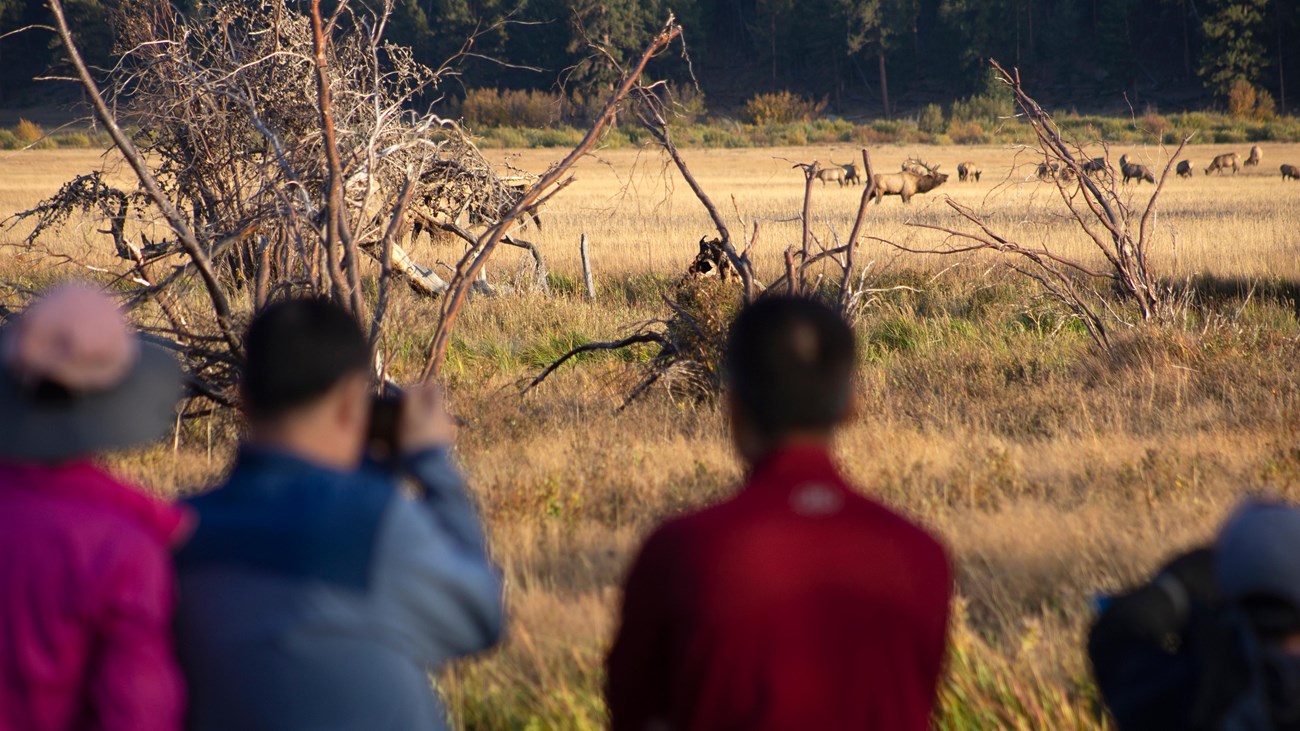Last updated: July 3, 2024
Thing to Do
Watch Wild Elk

NPS Photo/Grossman
Roosevelt elk, one of the largest members of the deer family, are the most easily observed wildlife in the parks. You can find elk throughout the parks, mostly in herds feeding in open, grassy areas. Bring binoculars or use your camera's zoom feature for the best views!
Remember: Elk are dangerous, unpredictable, and can be aggressive, especially during the fall mating season. Always give elk plenty of space (25 yards, or 1/4 of a football field), whether you watch them near the roadside or encounter one on a trail.
Pets are permitted in parking and picnic areas, but must be on a leash (6 ft max) at all times.
Orick
Elk are often spotted around the town of Orick near the parks' southern end. Much of the land here is private property, so please stay aware of park boundaries as well as highway traffic.
Elk Meadow
This meadow is a popular spot for elk herds and is near several trails and a picnic area. Turn left onto Davison Road 3 miles north of Orick. Several pull-outs provide parking as well as information exhibits about elk. Continue along the road for less than a mile to reach the picnic area, restroom, and trails.
Elk Prairie/ Prairie Creek Visitor Center
Head to Prairie Creek Visitor Center to see elk, in addition to ranger-led tours, visitor information and educational exhibits, park store, restroom, and picnic area. From Orick, take exit 753 from Hwy 101 for Newton B. Drury Parkway. Use the pull-outs along Elk Prairie for parking and informational exhibits. Parking is also available near Prairie Creek Visitor Center.
Crescent City Area
Elk are less common in the northern area of the parks, but can sometimes be seen south of Crescent City near Enderts Beach Road. This area is generally outside of park boundaries, so please stay aware of private property boundaries as well as highway traffic.
Roosevelt Elk Information
Males sport large antlers in late summer through winter. Females are smaller in stature and have no antlers. The rut, or mating season, occurs in fall. Calves are born in grassy, open areas in May and June.
Cows and their young live in loose herds, while bulls live alone or in “bachelor” groups until the mating season. Elk communicate by bugling, which is a combination of roaring and whistling at the same time.
Elk prefer “edge” environments, such as grassy fields near forested areas, which offer quick protection from lurking predators or poor weather conditions. This species is also seasonally migratory, traveling from higher elevations in the summer months to valleys in the winter in search of food and shelter.
Learn more online or at Prairie Creek Visitor Center.
